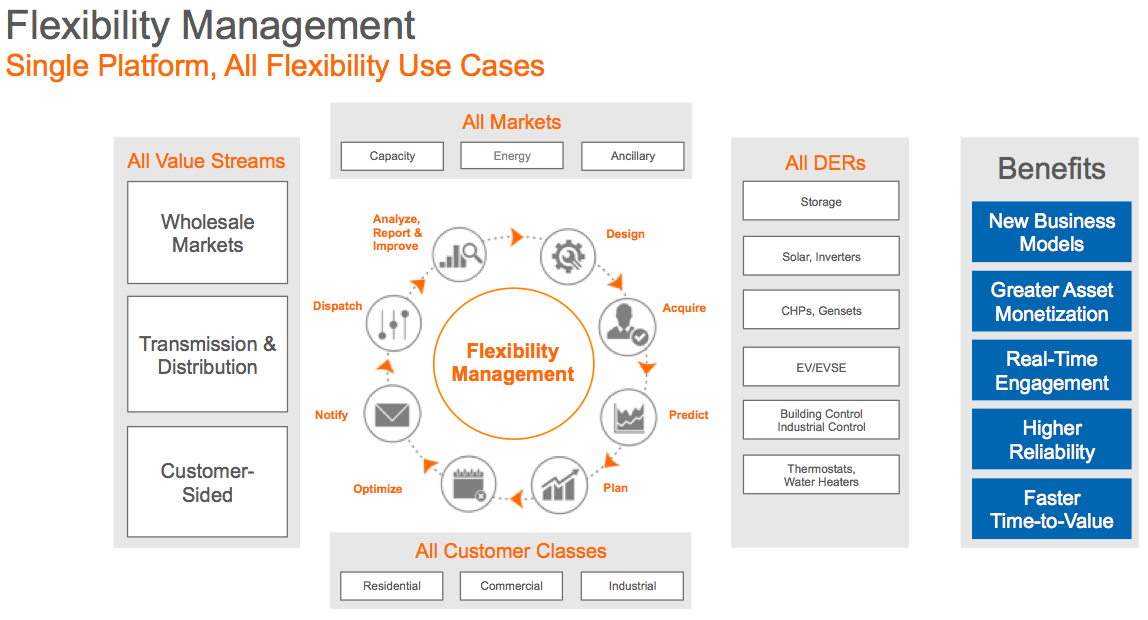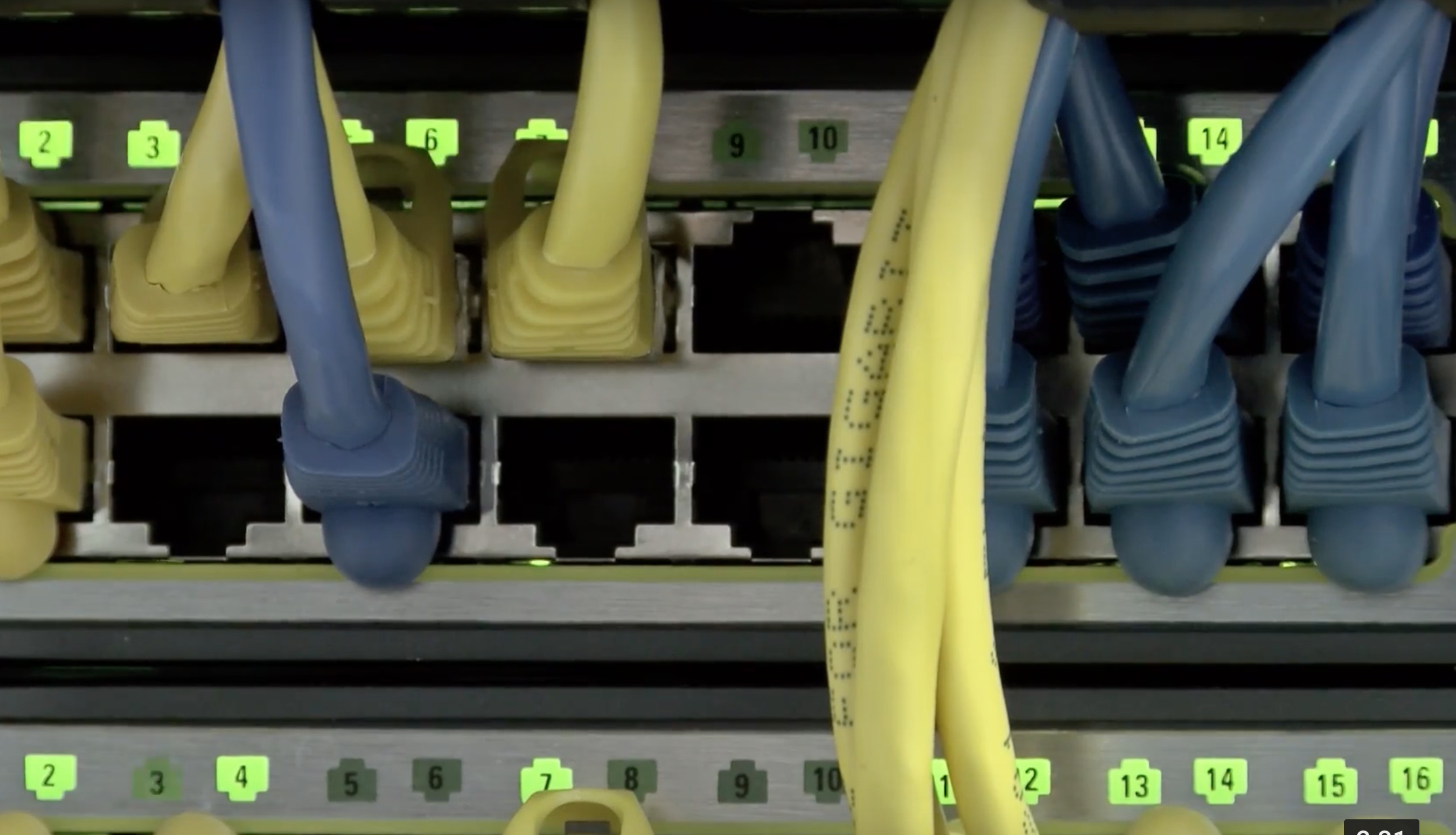Flexibility Management Software: Creating value in the new distributed electric grid
 Today's energy system is being fundamentally transformed from the traditional centralized electrical grid into a distributed network of connected assets.
Today's energy system is being fundamentally transformed from the traditional centralized electrical grid into a distributed network of connected assets.
New information and communications technologies are enabling smarter, more efficient grid operations that leverage customer data, smart devices, and other automated systems. These technologies are lowering transaction costs, making it easier to communicate, coordinate and automate grid interactions.
Meanwhile, increased global competition, deregulation, declining costs, and the growth of distributed energy resources (DERs), are forcing utilities to invest billions in grid modernization and develop new business models. As DERs proliferate, the previously well-defined lines at the grid edge blur between energy consumption and generation, and between consumer and producer.
To create value for customers in this shifting business environment, utilities must be able to efficiently manage flexible capacity in real time, at scale.
How to manage flexibility
Flexible capacity is the potential output available, from flexible resources, that can quickly be ramped up or down. Flexible resources include demand response (DR) programs, as well as DERs such as solar systems, batteries (both behind-the-meter and utility-scale), smart thermostats, and electric vehicles. Bloomberg New Energy Finance estimates flexible capacity will grow more than fourfold, to 1,041 gigawatts globally by 2040.
A power system needs a variety of flexibility services with time scales ranging from seconds to seasons; a range of different technology options can be used to meet those needs.
Flexibility management enables the modern grid
With customer-owned distributed resources consuming, storing, and generating energy, and an increasingly complex value chain, the energy system must evolve to accommodate complex and multi-directional energy flows. The grid is becoming a network, where the data flowing across the network helps optimize energy flows.
Flexibility management software enables the modern energy system by managing both data and energy in a distributed, dynamic, digital network. It works by monitoring and managing millions of interconnected devices, which can generate, store, manage, and consume power. And it encompasses both the energy and the data flowing across the network.
Flexibility management software leverages advanced data science, machine learning, and high-performance computing to monitor, predict, optimize, and control flexible capacity from any type of grid-connected DER and DR resource - all in real time, and at scale.
- From a single platform, flexibility management software provides DRMS, DERMS, virtual power plant (VPP), and energy storage management solutions.
- Managing flexible capacity from distributed assets allows energy companies to balance supply and demand in real time, integrate renewable energy into the grid, co-optimize large portfolios of distributed assets, monetize flexible capacity from DERs, and deliver new energy services to customers in both regulated and deregulated markets.
- Aggregating DERs and DR resources creates new value streams, which allows utilities to supply ancillary services, defer capital investments with non-wires alternatives, and develop revenues for customers in wholesale markets.
Flexibility management enables cooperation
 Most importantly, flexibility management delivers value on both sides of the meter. The meter has traditionally marked the end of the utility's influence. One of the advantages of flexibility management software, though, is that it bridges the gap at the grid edge-both technically and in terms of customer engagement.
Most importantly, flexibility management delivers value on both sides of the meter. The meter has traditionally marked the end of the utility's influence. One of the advantages of flexibility management software, though, is that it bridges the gap at the grid edge-both technically and in terms of customer engagement.
Flexibility management software allows access, visibility, communication, control, and dispatch of customer-owned, behind-the-meter assets. But the software also enables real-time cooperation between energy companies and their stakeholders. On-site storage allows the customer to lower its demand charges; by working with the utility, the customer enables the utility to aggregate available storage capacity (which the customer could not do on its own) and bid it into wholesale capacity markets. With flexibility management software, utilities can deliver new value-added services to their customers in the new distributed energy grid.
 Shane O'Quinn is Senior Director, Strategic Accounts at AutoGrid, which develops flexibility management software to allow utilities, electricity retailers, energy service providers and owners of large asset portfolios deliver clean, affordable and reliable energy by managing distributed energy resources in real time and at scale.
Shane O'Quinn is Senior Director, Strategic Accounts at AutoGrid, which develops flexibility management software to allow utilities, electricity retailers, energy service providers and owners of large asset portfolios deliver clean, affordable and reliable energy by managing distributed energy resources in real time and at scale.
AutoGrid | www.auto-grid.com
Volume: 2018 January/February







